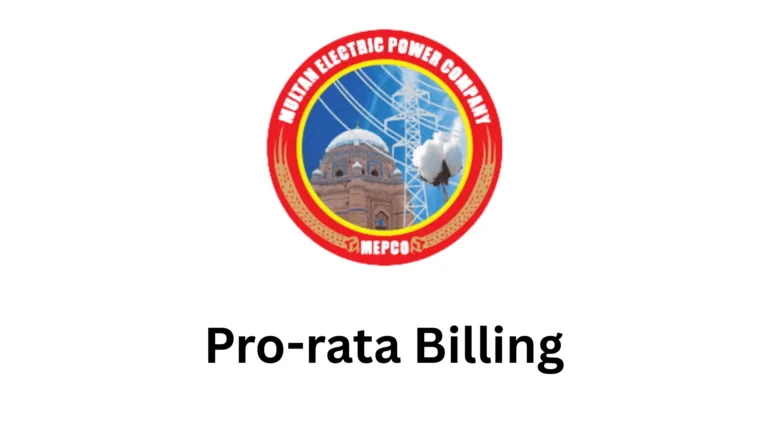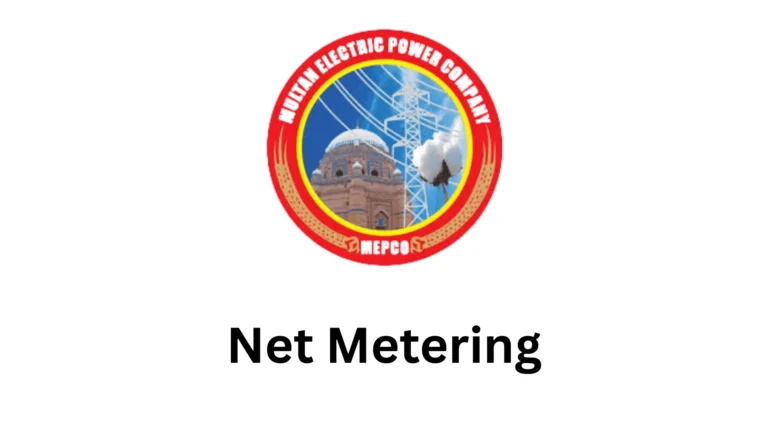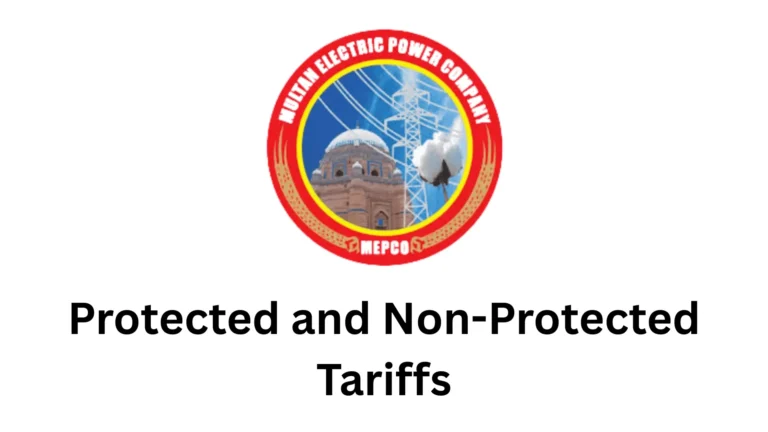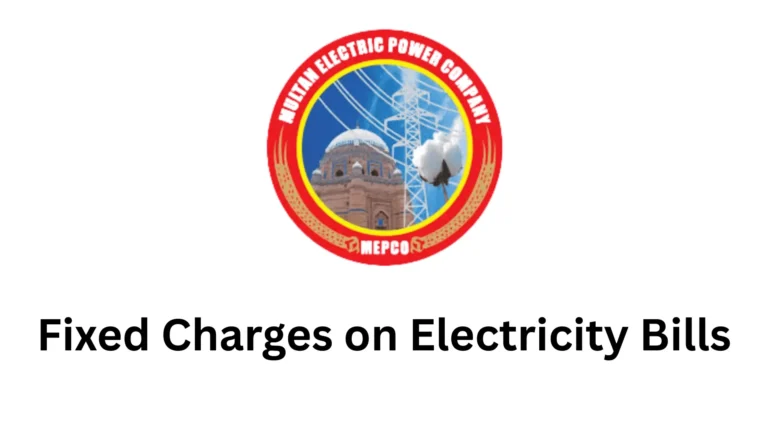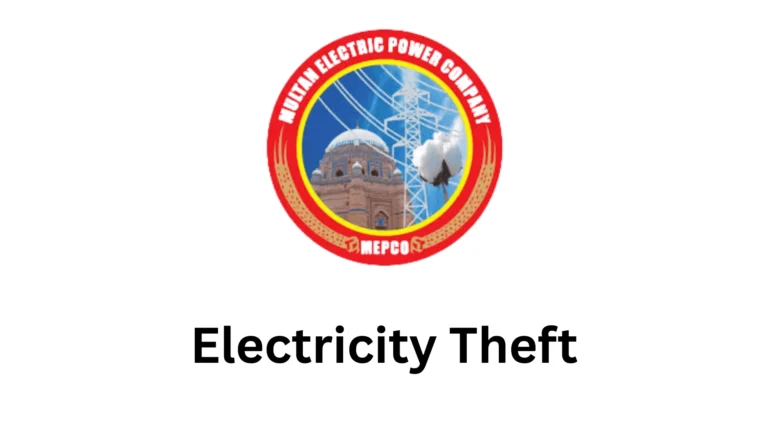Gross Metering: The Game-Changer in Energy Management
Gross Metering is a billing arrangement in which the total amount of electricity generated by a consumer’s solar photovoltaic system or renewable energy unit is exported to the grid.
The consumer does not directly use the electricity they generate by solar. Instead, they purchase their own electricity which they need from the distribution company.
And simultaneously selling all of their generated power by solar system to the grid at a fixed feed-in tariff (FIT) or rate set by the regulator.
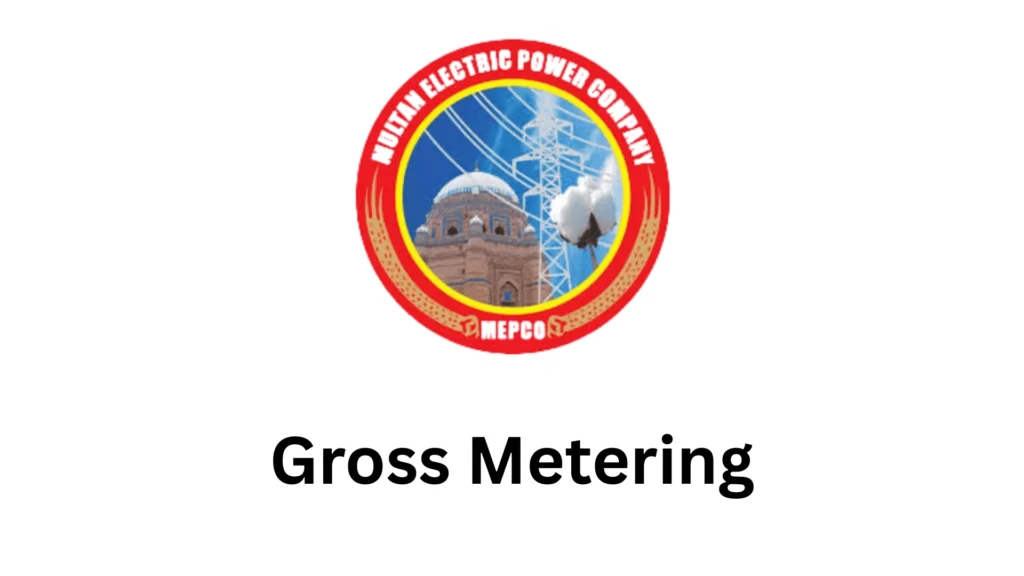
Importance of Gross Metering in Renewable Energy Systems
Gross Metering plays a vital role in advancing renewable energy for the giving several reasons:
Promotes Large-Scale Solar Installations
Since its focus is on selling power rather than self-consumption of electricity. Its gross metering encourages businesses, industries, and independent power producers to set up bigger solar plants.
Assured Revenue Stream
With fixed tariffs and government-regulated purchase agreements.The producers get guaranteed income from MEPCO for every unit of electricity supplied to the grid.
This makes renewable energy a more attractive investment.
Supports Grid Stability
The gross metering strengthens energy supply. It reduces peak load stress, and supports overall grid reliability.
Encourages Renewable Energy Market Growth
It helps to develop a commercial renewable sector. Where power production is treated as a business, creating jobs and attracting private investment.
Climate and Sustainability Benefits
As more solar and renewable energy is transferred into the grid . Depending on fossil fuels decreases, lowering greenhouse gas emissions and contributing to sustainable energy goals.
Key Differences Between Gross Metering and Net Metering
Ownership of Electricity
⚡ Gross Metering
In a Gross Metering system, the electricity generated by a solar plant or renewable system is not owned for self-consumption by the producer. Instead, all units of electricity generated are transferred directly to the grid. The producer is treated as a power supplier, selling electricity to the distribution company (DISCO) such as MEPCO or WAPDA.
🔋 Net Metering
In a Net Metering system, the ownership of electricity works differently. The electricity generated by the solar system is first used to meet the consumer’s own daily needs. Only the excess electricity — the amount left after self-consumption — is exported to the grid. The exported units are credited against the consumer’s electricity bill, effectively reducing their net payable amount.
| Aspect | ⚡ Gross Metering | 🔋 Net Metering System |
|---|---|---|
| Ownership of Power | 100% sent to grid, none for self-consumption | Used by consumer first, excess sent to grid |
| Consumer Role | Power seller (like a small power plant) | Self-consumer + occasional power exporter |
| Financial Benefit | Fixed revenue for all units generated | Savings on electricity bill + credits for excess |
Billing Mechanism
⚡ Gross Metering
The entire energy generated is sold to the grid. In a Gross Metering arrangement, all electricity produced by the solar or renewable system is transferred to the grid. The consumer does not directly use their own electricity. Instead, a separate meter is installed to record the total energy exported to the grid.
🔋 Net Metering
In this arrangement, the billing system offsets a consumer’s electricity use against their generation. The energy produced by the solar system is first used to meet the consumer’s own needs. Any surplus energy is exported to the grid and recorded by a bi-directional meter, reducing the consumer’s payable amount.
| Aspect | ⚡ Gross Metering | 🔋 Net Metering System |
|---|---|---|
| Metering System | Separate export meter for generation | Bi-directional meter records both import and export |
| How Billing Works | Payment for all units generated, full retail bill for consumption | Bill = (Grid imports – Grid exports) |
| Consumer Benefit | Revenue from selling energy | Reduced electricity bills through self-consumption |
Financial Returns
⚡ Gross Metering
In a Gross Metering system, financial returns come in the form of fixed payments for every unit of electricity generated and exported to the grid. The electricity producer acts like an independent power producer (IPP) or a small-scale energy seller. The tariffs are usually set by the government or regulatory authority and remain fixed for a certain number of years.
🔋 Net Metering
In a Net Metering system, financial returns are realized in the form of savings on electricity bills rather than direct payments. The generated electricity is first consumed by the owner, reducing reliance on the grid. Any extra units are exported to the grid and credited against future bills, helping the consumer avoid high retail electricity costs.
| Aspect | ⚡ Gross Metering | 🔋 Net Metering |
|---|---|---|
| Form of Return | Direct revenue through fixed tariff payments | Indirect savings by reducing electricity bills |
| Best For | Large solar farms, industries, institutions | Households, small businesses |
| Financial Predictability | High (guaranteed tariff income) | Variable (depends on consumption and generation) |
Complexity of System
⚡ Gross Metering
In a Gross Metering system, the process is relatively straightforward. A separate export meter records the total amount of electricity generated and sent to the grid. The DISCO calculates the producer’s income based on the fixed feed-in tariff (FIT) multiplied by the total units exported. The producer receives a payment for the electricity supplied to the grid. Their own electricity usage is measured separately by the standard consumption meter, and they pay their regular electricity bill for this usage.
🔋 Net Metering
In a Net Metering system, the billing process is more complex because it balances the energy consumed and the energy generated. A bi-directional meter is installed to measure both:
- Energy imported from the grid.
- Energy exported to the grid.
At the end of the billing cycle, the DISCO calculates the net difference between imports and exports. If the consumer has exported more energy than imported, the excess is credited to their next bill.
| Aspect | ⚡ Gross Metering | 🔋 Net Metering |
|---|---|---|
| Meter Type | Separate export and consumption meters | Bi-directional meter (import + export) |
| Billing Process | Simple: sell all, buy all | Complex: calculate net consumption vs. generation |
| Income/Bill Flow | Single flow of income (generation payment) + regular bill | Adjusted bill based on balance of imports and exports |
| Ease of Management | Easy to administer | Requires more detailed tracking and reconciliation |
Future Prospects
As renewable energy continues to grow globally, both Gross Metering and Net Metering will play significant roles in shaping sustainable energy systems.
Their future prospects depend on policy direction, consumer demand, technological advancements, and the need for balancing energy generation with consumption.
Conclusion
Gross Metering and Net Metering are two distinct yet complementary mechanisms that drive the integration of renewable energy into modern power systems.
While both aim to promote clean energy adoption, they differ in purpose, scale, and financial benefits. Looking ahead, both systems will continue to play vital roles in renewable energy growth.
Gross Metering will strengthen grid supply through industrial-scale projects, while Net Metering will democratize solar adoption at the grassroots level.

